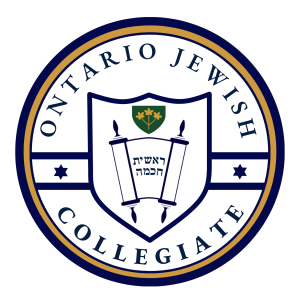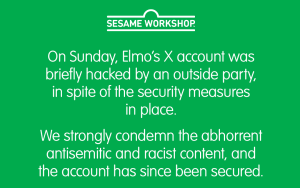 WINNIPEG — Prof. Lubomyr Luciuk says he’s not an antisemite, despite a charge by Canadian Jewish Congress CEO Bernie Farber that Luciuk has been “a one-man wrecking crew driving a wedge between the Jewish and Ukrainian communities in Canada.”
WINNIPEG — Prof. Lubomyr Luciuk says he’s not an antisemite, despite a charge by Canadian Jewish Congress CEO Bernie Farber that Luciuk has been “a one-man wrecking crew driving a wedge between the Jewish and Ukrainian communities in Canada.”
Bernie Farber
At issue is how the Holocaust will be presented in the Canadian Museum for Human Rights, a national museum now under construction in Winnipeg. Despite stating that he doesn’t want the issue to degenerate into a fight between Canadian Jews and Ukrainians, Luciuk, as the current director of research and former chairman (2007-2010) of the Ukrainian Canadian Civil Liberties Association (UCCLA), is leading the UCCLA’s campaign against having a permanent Holocaust gallery in the museum.
“When I was growing up in Kingston, my father worked for a Jewish employer,” said Luciuk, a political geography professor at the Royal Military College of Canada in Kingston. “We always had a positive relationship with the Jewish community in Kingston. It’s too bad that this issue has degenerated into nasty personal attacks.”
The UCCLA and its sister group, the Ukrainian Canadian Committee (UCC), are upset that a report published in September by a 17-member museum-content advisory committee granted permanent gallery space to only the Holocaust and Canada’s aboriginal peoples.
The Ukrainian groups’ concern is shared by the German-Canadian Congress, which issued a statement last month noting its “alarm and concern about the museum’s dedication of permanent galleries to Holocaust and Canadian aboriginal issues.” Congress president Tony Bergmeier called on the museum to be “inclusive and equitable in its treatment… No suffering by one group can be more important than the suffering of others.”
While this isn’t the first time that the two communities have expressed reservations about a permanent Holocaust gallery in the museum, they have recently joined forces in a new lobbying campaign aimed at persuading Heritage Minister James Moore to set up a new advisory committee to determine the content of the museum.
The Ukrainian campaign features postcards showing Ukrainians behind a barbed-wire fence, highlighting the internment of 6,000 Ukrainians in Canada in World War I as enemy aliens. Supporters are asked to sign the back of the postcard, which calls for a content committee that is “truly representative of the Canadian population, inclusive, fair-minded and non-partisan,” and mail them to the Heritage Minister in Ottawa.
The Ukrainian organizations also want equal exhibition space in the museum for the Holodomor, the famine brought about by Stalinist policies in the early 1930s that has been blamed for the deaths of millions of Ukrainians.
“The response to our postcard campaign has been overwhelmingly positive,” Luciuk said. “We have a great deal of support for our position that no one ethnic group’s suffering should be elevated among others. That is not the Canadian way.”
While Luciuk acknowledged that the museum “can’t tell the whole story of every mass atrocity,” he said the museum should consider thematic galleries.
“Why not have a gallery called ‘Canadian Internment Operations’ that deals with Ukrainians and others during the First World War, Germans, Italians and Japanese during the Second, the Québécois in 1970?” he asked.
Farber agreed that the Holodomor was “a terrible tragedy,” but he said the Holocaust is on an entirely different level and has had “a profound impact” on Canadians and other peoples.
“The Holocaust redefined the limits of human depravity,” he said. “It challenged the very foundation of our civilization. One in every three Jews in the world at that time was murdered, a slaughter from which we have not yet recovered.
“The Holocaust was also the foundation for our modern human rights legislation, and it makes perfect sense that the Holocaust should have a permanent place in the museum. It also makes sense that the plight of Canada’s First Nations should also have a prominent place in the museum. What makes no sense is pitting one group of Canadians against another.”
Angela Cassie, the museum’s director of communications, agreed the Holocaust should receive a prominent place in the institution because of its historic role as a catalyst for the Universal Declaration of Human Rights and human rights legislation that followed.
“Our goal isn’t to compare the suffering of different groups,” she said. “We will be using the Holocaust to show the fragility of human rights. It’s also one of the most thoroughly researched areas of recent history. We envisage the Holocaust as the lens through which we teach visitors how to recognize signs of human rights violations and point to actions they can take to combat human rights abuses.”
Cassie noted that the Holocaust also affected the Roma, homosexuals, the disabled and others.
“There is a misconception out there that there will only be two permanent zones,” she said. “There will in fact be 12 permanent zones and the Holodomor will have a permanent display in the ‘Mass Atrocity’ zone, immediately adjacent to the Holocaust zone. This zone will feature detailed information on the Holodomor and many other mass atrocities that have taken place worldwide and will provide educational opportunities for visitors to learn more about these events.”
Regarding the internment of Ukrainians and others, in a Jan. 6 statement, the museum noted that “the zone examining Canada’s Human Rights Culture will look at human rights abuses in Canada’s past, including internment operations.”
Cassie added that the displays will be updated regularly as more information becomes available. They’ll also be interactive and digitally accessible.
Luciuk said that on Dec. 18, representatives of the UCC, Luciuk’s UCCLA and the Canadian Ethnocultural Council met in Toronto with five members of the museum, including president and CEO Stuart Murray. At the meeting, the museum reiterated its position that the advisory committee report, while important, is not definitive. And while the museum’s content will be contained in 12 zones, including two dedicated to the Holocaust and aboriginal issues, the content of these exhibits hasn’t been fixed.
A follow-up meeting involving Ukrainian Canadians and the museum was scheduled to be held in Winnipeg later this month.






